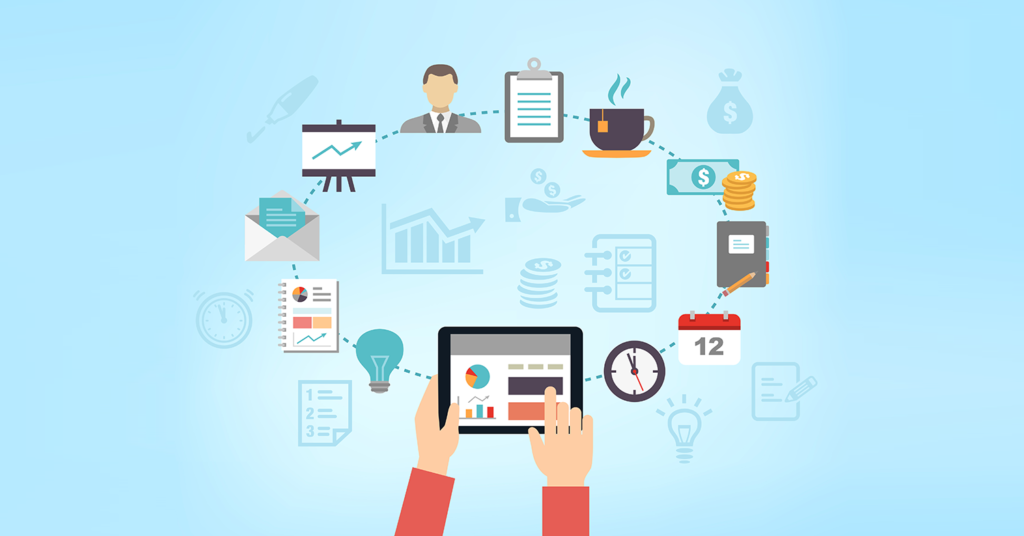You sit down to do your homework and can’t bring yourself to remember all this pile of information? Then you need to work on some of your habits. At first, of course, you will have to make an effort, but after a while you will get used to the new rhythm of life, and learning will become a familiar process for you.

How to get ready
Learn to allocate your time. Create a schedule and allocate a certain amount of time to study. This way you can improve your grades. The time allocated to study depends on how much you need to learn, whether you study at school or in college, and the subjects you need to learn. Stick to the timetable you have set. Plan how you will spend the day: when you need to eat, how long you will gather, how long it will take to get to school/institute when you return from class.
You need a balance between studying, working (if available) and having fun. If you really want to succeed in your studies, you will have to reduce the time you spend on work and entertainment. Prioritise and think about which area you should spend more time and attention on. Remember that education is most important to you right now.
If you are studying at an institute, you need to understand how long it takes you to study each subject and how long it takes you to improve your grades. For example, if you have 3 hours of physics per week and you have a lot of problems with it, you may need 9 hours per week to improve your grades. If you have 3 hours of literature per week but you are doing better with it than you are doing with physics, you should do an extra 2 hours per week.
Find your pace. Understand the pace at which you are comfortable learning. Some subjects will take you less time, some more time. You need to allocate your time as efficiently as possible and study at a pace that is comfortable for you.
If some subjects are more difficult for you, spend more time on them.
Wake up. Spend enough time sleeping. Get a good night’s sleep so you have the strength to study, especially if you have a test or a test tomorrow. Studies show that test results depend directly on your ability to concentrate. You may think that your best idea is to study the night before your exam, but it is not! Start repeating the material a week before the exam, and go to bed early the night before the exam.
If you’re very sleepy, not studying, take a nap. Sleep for 15-30 minutes, and when you wake up, do some exercise and start studying.
Clear your mind. If your endless thoughts are disturbing you, briefly put these thoughts on paper and then get to work. This will help you focus on your studies.
Remove all electronic devices to the side. That’s what gets in your way the most. Gadgets are always getting messages and notifications from social networks, so mute your mobile phone and put it in your bag so it doesn’t distract you. If possible, do not turn on your computer.
If you are constantly distracted by social networks like YouTube, Facebook, VKontakte, mute notifications for a while and block access to these sites.

How to organize your workplace
Find a suitable place to study. Organize your workspace. You should feel comfortable and free. If you hate sitting at your desk, sit on the sofa or chair. Wear comfortable clothes such as sports trousers and a sweater.
This should be a relatively quiet and free space.
Your workplace should be comfortable, but not enough for you to fall asleep! That’s why you shouldn’t sit on the bed.
Street noise is great for the background, but if loud music or neighbors’ conversations get in the way, go to another room.
Take care of the selection of background music. Some people find it easier to concentrate in silence, but some need quiet music for the background. Music will help you calm down, lift your spirits and give you an incentive. Instrumental music with no words is best for the background. It can be classical music, movie music or baroque music.
If the music with words doesn’t distract you, you can play some of the familiar compositions. Get rid of any noise that will distract you. You can listen to rock music that has words in it, but pop music is highly discouraged. Choose the one that suits you best.
Music should be soft. Music that is too loud will distract you, and soft music will help you focus.
Turn off the radio. Advertising and DJ cues will distract you.
Listen to the background sounds. They’ll help you focus on your studies. They can be different natural sounds (waterfall noise, rain, thunder, jungle sounds). You can find these sounds on the Internet (for example, on Youtube).
Turn the TV off. TV shows and ads will distract you from your textbook. In addition, voices make it difficult to remember.
Have an appetizer. Eat healthy food and snack on foods that are free of sugar and fat. You need nuts and vegetables. If you want something sweet, eat dark chocolate. Drink a lot of water and try tea instead of coffee.
Avoid foods that are high in sugar and carbohydrates. Crackers, chips, instant noodles and sweets are very bad snacks. Do not drink sweet carbonated and energy drinks. They have too much sugar in them, and it’s bad for your body. If you drink coffee, leave the sweet drinks behind.
Prepare the snack in advance so you don’t have to cook it at the time you’ve allocated to study.
How to make the learning process more effective
Try the SQ3R method. The essence of this method is that the study and memory of the material is done by multiple reading of the material. First, you need to run through the text to understand what it’s about, and then read it carefully into each line.
Start by looking for tables, figures, large headings and bold words.
Then pay attention to any question marks.
Now read the chapter by trying to answer the questions you have met.
Read it again and answer all the questions verbally.
Summarize it up. Think about which thoughts are important and why.
There is another method. It consists of the reader guessing in advance what we’re talking about.
Start with the title. What does it tell you? Have you figured out what the topic is yet? It will help you focus better on the content of the article or text.
Go on to the introduction. What do you take from it that’s important?
Run your eyes through all the headlines and subheadings. Do you have any idea what you will be reading about? Turn every headline and subheading into a question in your mind.
Read the first sentence of each paragraph. Usually, the first sentences reveal the micro-theme of a paragraph.
Pay attention to images, charts and graphs. It is important to find the words in bold and bold italics immediately. Look for numbering and other characters in the text.
Read the questions at the end of the chapter. Think you should know exactly how to read this chapter. As you read the chapter, highlight the main points in your mind.
Take a look at the summary of the chapter before you go on to read it.
Highlight the important details. Take a highlighter or highlight important points with a pencil, so you can quickly find them when you look through the material again. Don’t highlight everything, just select the most important sentences. You can take notes with a pencil in the margins to summarize important thoughts or comment on sentences.
Then you can quickly run through the highlighted sentences and quickly refresh your memory of the material you have learned.
If your textbook belongs to a library, you can use stickers. Briefly write down your comment on a sticker and stick it next to the desired paragraph.
Periodically review the highlighted sentences and comments if you need to quickly refresh your memory of the material. For example, this is very handy if you are preparing for an exam or a test.
Let down after reading and try to express yourself with your words, not with the words in the textbook. This will make it easier for you to remember the material. Don’t forget about your comments and notes. You can write a summary consisting of several items. Write down only the most important ideas.
If possible, read aloud to remember more quickly. If you have a good auditory memory, you will find this method to your liking.
If you can’t sum up and summarize the material, try telling it to someone else. Imagine telling the material to someone who knows nothing about it. For example, if you need to memorize regions or geographic sites, tell someone about them.
In summary, highlight the information in different colors. The brain learns information better if it is associated with a color.

Make special cards. Write a question on the card and an answer on the other side. This is very convenient because you can take the cards with you and repeat the material anywhere and anytime.
You can download different applications instead of cards. You can simply take pieces of paper, roll them up and design them as cards. To see the correct answer, you will need to open the card. Repeat the material until it is properly assimilated. “Repetition is the mother of teachings.”
You can use the Cornel system, which separates notes by keywords. You can remember certain information by seeing a keyword in front of you.
Create associations. The most effective way to memorize information is to link it to an existing one. This way you can memorize a lot of information.
Find the most convenient method for you. Think about what you already know? Maybe song lyrics, or are you good at choreography or photography? If you can’t remember the information, write a song that mentions the chapter’s main thoughts; think of a dance; draw a comic book. The funnier and funnier the song/ dance/ comic book comes out, the better! Most people memorize funny and stupid much faster.
Use a mnemonic (memorization tool). Present the information in a sequence. For example, if you need to memorize notes in music, select an association for each note. It is much easier to memorize meaningful sentences than sets of letters.[22] You can construct your mind traits to memorize all the information in detail. If you need to memorize a small amount of information, think of a chain to memorize it.
Arrange the information into shelves by creating a mental map. As a result, you should get a structure consisting of words and ideas that relate to the information you need to remember.
Try to visualize it. Make a movie or video clip of the material you need to remember. Play that movie several times in your mind. Imagine every little thing, use all your senses: smells, visual images, feelings, sounds and tastes.
Break the information down into several small parts. This is one of the most effective ways. This way you can memorize the right material in pieces. You can sort it by micro-themes or paragraphs. The point is to reduce the amount of information that you need to remember. Remember one paragraph first, and then move on to another.
Make a list. Try to put all the information into one sheet, sorting it by items. In your spare time, look at this sheet and remember everything you tried to remember. Take your notes and write down the most important concepts and sentences.
If you compile the list electronically, you can highlight the text, underline it, resize it and so on. This helps if you have good visual memory.